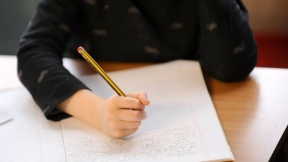
Spending on the nation’s public schools has gone up slightly, according to data from the National Center for Education Statistics, with state spending on K-12 increasing at exactly the same rate as federal spending has gone down. In a blog post published last Friday, NCES reported that the amount of money spent per pupil in elementary and secondary schools rose by 1.2 percent from fiscal 2013 to fiscal 2014, up to $11,066 per student, after declining from fiscal 2009 to fiscal 2013. Spending from federal, state, and local resources totaled $623 billion in fiscal 2014. From fiscal 2013 to fiscal 2014, state revenues for schools rose by 3.9 percent, from $278 billion to $288 billion, while federal revenue dipped by 3.9 percent, from $57 billion to $56 billion, according to the post written by Stephen Q. Cornman and Lauren Musu-Gillette. Local spending rose by 0.5 percent, from $279 billion to $281 billion. The recent NCES report is based on the National Public Education Finance Survey and NCES’ Common Core of Data. The figures NCES uses are adjusted for inflation.

The share of education spending coming from Washington continues to decline since the Great Recession: It dropped from 13 percent in fiscal 2011, when the American Recovery and Reinvestment Act (commonly known as the stimulus) was in full swing, to just under 9 percent in fiscal 2014. The Center for Budget and Policy Priorities, a think tank that analyzes spending on low-income citizens, reported at the start of this year that in fiscal 2014, 31 states spent less per student than they did in fiscal 2008. Per-pupil spending by state ranged from $6,546 in Utah, to $20,577 in the District of Columbia, according to the new NCES numbers.










